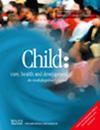Risk and Protective Factors for Burnout Among Parents of Children With Complex Care Needs: Parents' Perspectives
Abstract
Background
Parental burnout has been proposed as resulting from a persistent imbalance between stress-enhancing factors (demands/risk factors) and stress-alleviating factors (resources/protective factors). Parents of children with complex care needs (CCN) face this imbalance more often than parents in general. To address this, we need to know which factors are considered risky and protective for burnout from the perspectives of parents of children with CCN. To facilitate targeted interventions, this study sought to explore both risk and protective factors associated with burnout as perceived by parents of children with CCN.
Methods
We conducted semi-structured interviews with 38 parents, who recognized or identified themselves with burnout-related thoughts and feelings. Parents were selected for maximal variation, based on parental, child and family characteristics. The data was analysed through inductive thematic analysis.
Results
Fifteen themes, divided into three categories, were identified: (1) ‘the parent’ encompassing factors intrinsic to the parent, such as emotional factors and internal drivers, and physical health; (2) ‘the environment interacting with the parent’ including organization of care, social support and socio-economic factors; and (3) ‘the sum of all factors’—themes underscoring the collective impact of the context including the caregiving and parental responsibility, and the perception of no option but to endure. Most factors were identified as both risk and protective factors, underscoring the dynamic nature of burnout.
Conclusion
Participating parents ascribed burnout to unique combinations of risk and protective factors. Notably, these factors extended beyond the personal sphere to encompass societal structures that current conceptual models for dealing with burnout often ignore. From the perspective of parents, broad multisystem approaches to address parental burnout would likely appear most relevant.


 求助内容:
求助内容: 应助结果提醒方式:
应助结果提醒方式:


